Module 4
1. Module 4
1.12. Lesson 3
Module 4—From Fertilization to Birth
Lesson 3—Hormones and the Birthing Process
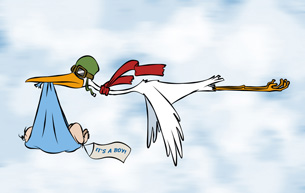
© Jonathan Cooke/Shutterstock
 Get Focused
Get Focused
Birth is an incredible event. Although birth is not the beginning of your life’s story, it is certainly one of the most important moments in your life. What is your birth story? Do you know what happened around the time of your birth? What was the day of your birth like? What events surrounded this special moment in your life?
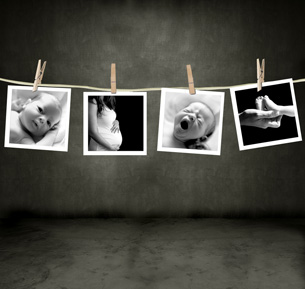
© Phase4Photography/Shutterstock
Today women have many choices for how to deliver their baby. Birth at home with a midwife, birth at a birthing centre with a midwife, birth in a hospital, water birth, and many more options are available today. No matter what a woman’s birth plan is, once the birthing process begins there is no going back.
Gestation in the human species is approximately 266 days and ends with the birth of the fetus. For Jane, a few days before her baby was ready to enter the outside world, she felt a sensation that the baby was settling deeper into her pelvis. This sensation is commonly called lightening.
Parturition, or labour, is divided into three stages: the dilation stage, the expulsion stage, and the placental stage. Jane was said to be in labour when her cervix was dilated to about 3 cm in diameter and her uterine contractions lasted for 40 seconds and occurred every 15 to 20 minutes.
dilation stage: the stretching and opening of the cervix to 10 cm to allow passage of the fetus during expulsion
expulsion stage: the stage in which the smooth muscle walls of the uterus contract in rhythmic cycles to deliver the fetus from the vagina
placental stage: the stage in which further uterine contractions push the placenta out of the body through the vagina; also known as delivery of the afterbirth
dilation: the opening of the cervix to allow passage of the baby
contractions: the rythmic shortening of the muscles of the uterus to expel the baby
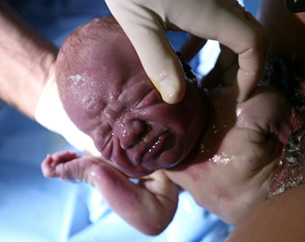
© emin kuliyev/Shutterstock
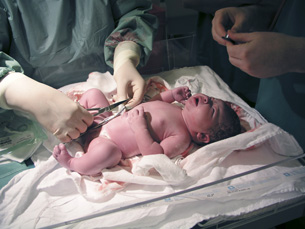
© Ingvald Kaldhussater/Shutterstock
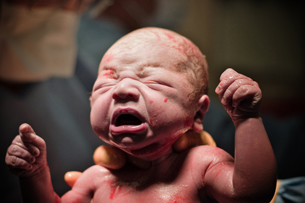
© Vivid Pixels/Shutterstock
Jane’s labour was controlled by both nerves and hormones through a positive feedback system. The dilation stage of parturition began as the cervix shortened, contracting up into the uterus. This event stimulated the secretion of oxytocin from the pituitary’s posterior lobe. Oxytocin caused uterine contractions, which pushed the fetus down toward the cervix. The pressure of the fetus on the cervix caused the cervix to stretch. These events sustained positive feedback to the posterior pituitary, causing the continued release of oxytocin. Uterine contractions also stimulated the release of prostaglandins, another example of positive feedback.
prostaglandins: a group of hormones that contribute to parturition by thinning the cervix and increasing contraction of the uterus
The expulsion stage of parturition consists of the delivery of the fetus. This is the stage in which Jane and John’s baby was actually born. For this to happen, their baby’s head had to rotate as it moved into the birth canal. Once the head and shoulders of the baby were out of the birth canal, the rest of the body delivered quickly. Soon after delivery, John was able to cut the umbilical cord.
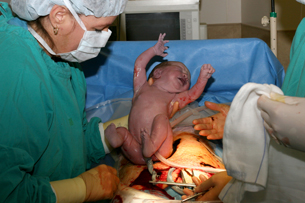
© Francois Etienne du Plessis/Shutterstock
There are many reasons why a normal vaginal birth may not be possible. When this happens, doctors deliver the baby by Cesarean section. A C-section, as it is sometimes called, is a surgical procedure where an incision is made in the mother’s lower abdomen through to her uterus.
Caesarean section (C-section): a surgical procedure in which the fetus is removed from the abdomen through an incision; used when vaginal birth is difficult or impossible
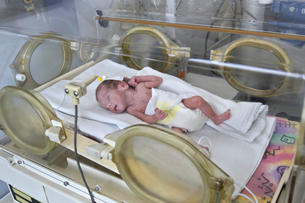
© PhotoCreate/Shutterstock
Lactation, or breast-feeding, occurs when estrogen and progesterone production is suppressed and the anterior pituitary secretes the hormone prolactin. Breast milk production is stimulated by the suckling of the new baby, through nerve endings in the nipple. Nervous stimulation causes oxytocin to be secreted, which acts to cause contractions in the breasts. For the first few days of breast-feeding, Jane produced colostrums, a yellowish liquid that contains antibodies and more protein than breast milk.
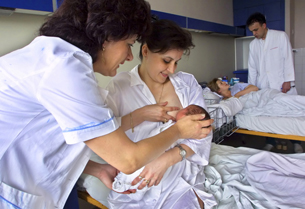
© PhotoCreate/Shutterstock
sucking reflex: an instinctive sucking action by a newborn that stimulates oxytocin secretion in the mother; results in release of milk from the mammary glands into the milk ducts of the breast
In the placental stage, which in most cases happens within 30 min of the baby’s delivery, the placenta disengages from the uterus and is expelled from the body. Jane was encouraged to breastfeed her baby as soon after delivery as possible. The sucking reflex also establishes positive feedback, causing the muscular uterine wall to contract. The shrinking of the uterus reduces blood loss.
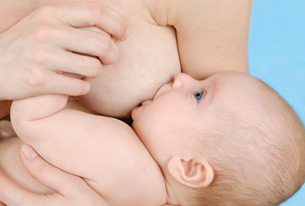
© Trutta55/Shutterstock
The following focusing questions are addressed in this lesson:
- What triggers the birthing process and what are its stages?
- What controls lactation?
 Module 4: Lesson 3 Assignment
Module 4: Lesson 3 Assignment
There is no assignment for this lesson. The information from this lesson will be assessed in your module assessment.
You must decide what to do with the questions that are not marked by the teacher.
Remember that these questions provide you with the practice and feedback that you need to successfully complete this course. You should respond to all of the questions and place those answers in your course folder.
While you are completing this lesson, there will be many opportunities for you to acquire, understand, and practise the concepts that are presented to you. As you complete these activities, as well as your summary notes, you will file everything in your course folder to reference when you are preparing for exams.
Remember, you also have the option of trying additional questions from the textbook for further practice. Consult with your teacher for the answers to these questions. The Key will also provide you with many Diploma Exam-style multiple-choice, numerical-response, and written-response questions that will be an excellent review of the module. Practising your responses is excellent preparation for the Diploma Exam.